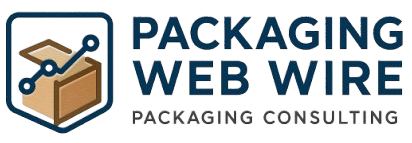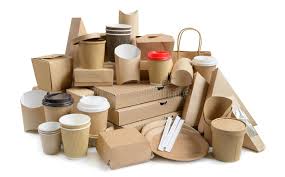The global disposables packaging market is witnessing a transformative phase. Valued at USD 40.99 billion in 2025, it is projected to reach USD 65.43 billion by 2034, expanding at a CAGR of 5.72% over the forecast period. This growth is driven by rising consumer demand for convenience, the booming e-commerce and food delivery sectors, and the global push towards safer, more hygienic packaging—especially in the post-pandemic era.
Disposable packaging, designed for one-time use, is increasingly seen across fast food outlets, catering services, healthcare institutions, and retail sectors. Its role in maintaining hygiene, simplifying food handling, and reducing cross-contamination makes it a vital player in today’s dynamic market.
Invest in Our Premium Strategic Solution: https://www.towardspackaging.com/download-sample/5279
Market Overview and Dynamics
Disposable packaging encompasses a wide range of items such as plates, bowls, trays, cups, wrappers, pre-fillable medical syringes, and more. Whether it’s for storing takeaway meals or ensuring sterility in medical environments, single-use packaging has become indispensable.
The market is fueled by several macro-trends:
-
Rise in on-the-go consumption and the increasing popularity of ready-to-eat meals.
-
E-commerce boom, with rapid delivery expectations requiring safe, lightweight, and effective packaging.
-
Healthcare demands, especially for sterile packaging solutions.
-
Sustainability push, with brands and consumers shifting toward eco-friendly packaging innovations.
Key Material Trends: Plastics Lead, Paper Gains Traction
Plastic Packaging Dominates with Over 55% Share (2024)
Despite growing environmental concerns, plastic remains the most used material for disposable packaging, thanks to its durability, lightweight nature, affordability, and excellent barrier properties. It ensures product safety during transit and helps extend shelf life—an essential factor in both food and healthcare industries.
Key plastics used include:
-
HDPE
-
LDPE
-
PET
-
PP
-
PS
Paper-Based Alternatives Gaining Popularity
The eco-conscious shift is prompting increased adoption of biodegradable and recyclable materials. Paper plates, cardboard boxes, cups, and bags are now widely preferred for their lower environmental impact and ease of disposal. These alternatives align with the global movement toward sustainable living and circular economies.
End-User Insights: Food Industry Takes the Lead
The food segment accounted for the largest market share in 2024 and continues to drive market expansion. The growth of food delivery services, fast-food chains, and meal kit subscriptions is pushing the demand for disposable packaging.
With services like Uber Eats, DoorDash, and Swiggy reshaping consumer behavior, single-use packaging ensures freshness, hygiene, and ease of consumption—all while supporting food safety regulations.
Other fast-growing end-use sectors include:
-
Healthcare – with rising demand for sterile disposable instruments and packaging.
-
Personal care and pharmaceuticals – seeking small, convenient, and safe packaging solutions.
Regional Analysis
Asia Pacific: Dominating the Market with the Fastest Growth
Asia Pacific held the largest market share in 2024 and is expected to grow at the fastest CAGR of 7.49% through 2034. Key growth drivers include:
-
Rising disposable incomes
-
Rapid urbanization
-
Proliferation of e-commerce platforms such as Flipkart, Shopee, and Myntra
-
Expanding food delivery apps like Zomato, Swiggy, and GrabFood
Additionally, the quick-service restaurant (QSR) boom in countries like India, China, and Indonesia is accelerating the need for innovative, single-use packaging.
North America: A Mature Market with Steady Growth
Holding a CAGR of 4.39%, North America remains a robust market driven by:
-
A culture of takeout and fast food
-
Widespread adoption of private-label packaging strategies by retailers like Walmart, Amazon, and Target
-
New food-tech collaborations (e.g., Uber Eats and Instacart’s joint venture in May 2024)
Growing environmental awareness is also pushing innovation, with companies investing in recyclable and sustainable packaging alternatives.
Sustainability & Innovation: Shaping the Future of Disposable Packaging
As regulatory pressures and environmental consciousness rise, companies are reimagining disposable packaging materials and designs.
Recent Developments:
-
Starbucks (May 2024): Unveiled a new cold cup using 20% less plastic, aiming to divert 13.5 million pounds of plastic from landfills annually. The cup is lighter, easier to store, and more eco-efficient.
-
Highland Community Waste Partnership (UK, Nov 2023): Collaborated with the National Cup Recycling Scheme to launch Cup Box infrastructure for enhanced recycling of single-use paper cups across Scotland.
These developments reflect the global industry’s pivot toward eco-friendly, low-waste solutions—crucial for long-term market sustainability.
Leading Companies in the Disposables Packaging Market (2025)
A blend of established players and innovators are shaping the competitive landscape:
-
Berry Global Inc.
-
Pactiv LLC
-
Winpak Ltd.
-
Amcor Group GmbH
-
Graphic Packaging International, LLC
-
Dart Container Corporation
-
Huhtamaki Oyj
-
Novolex
-
Hotpack Packaging Industries LLC
-
Transcontinental Inc., Ltd.
These companies are investing heavily in R&D, material innovation, and sustainable packaging lines to cater to evolving consumer preferences and regulatory standards.
Conclusion: Future Outlook for 2025 and Beyond
The disposables packaging market in 2025 stands at the intersection of convenience, innovation, and sustainability. With increasing demand from foodservice, healthcare, and retail sectors, combined with a global focus on environmentally responsible solutions, the market is set to witness robust expansion through 2034.
Companies that prioritize material innovation, recyclability, and consumer-centric designs will be best positioned to lead the future of packaging. As both consumers and regulators push for greener solutions, the disposable packaging industry must evolve—not just to meet demand, but to help define what a sustainable future looks like.
Source: https://www.towardspackaging.com/insights/disposables-packaging-market-sizing


